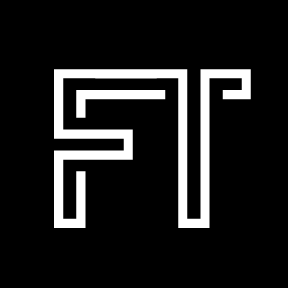Hala’s Ultimate Reading List: An Ode to Identity, Belonging, and Books That Inspire
Fashion Talk Community Reads <3
This year, I made a promise to myself: I would read one book each quarter. A small, intentional commitment to reconnect with a part of me that I’ve missed. It’s been rejuvenating, to say the least.
When I was younger, I devoured fiction. I was drawn to the kinds of books that took me somewhere else entirely. They transported me to new worlds, made me feel something bigger than the moment I was in, and stretched my imagination beyond what I thought was possible. Those stories helped me see myself differently. They reminded me who I was and who I could be.
At Fashion Talk, we know that Fashion Touches Everything, and often, it begins with a story. Books help shape the way we see ourselves, our creativity, our heritage, and our personal style. So today, on World Book Day, we’re giving you FT Reads, a space where members of the FT community can share the stories that have moved, challenged, and inspired them. This isn’t your typical book club. It’s about honoring the stories that helped us discover who we are.
We’re kicking things off with a feature from one of our own: Hala, a Fashion Talk volunteer editor, whose reading list is a deeply personal tribute to her Pakistani heritage, creative journey, and self-discovery.
This is Hala’s literary gallery. We’re honored to step inside.
Happy reading,
Amarissa
Orrr….plug in and listen on the Substack app. 🎧
My Literary Gallery: An Ode to My Pakistani Heritage
As a young girl, my mind was often consumed by the prospects of my coming of age. Being an anxious overthinker, I found myself burrowing my nose in a book, or researching through every movie made about growing up, to find a semblance of me in the media I devoured. With every page I turned came the overwhelming desire to become the women I read about; the ones who looked nothing like me, with fair skin and blue eyes and parents who didn’t stand over them guiding their every move.
Growing up was never easy, and the media I consumed only made it harder to see myself — a Pakistani, Muslim child of immigrants and the first in my family born in the States. Would I have struggled as much if the girls in those books looked like me? If their challenges echoed my own? How much does representation truly matter? It wasn’t until I had navigated my own coming-of-age that I finally saw myself in the stories I once dismissed. Welcome to my gallery. Sit, stare, and stay awhile. I promise you won’t regret it.
Returning to Myself Through Style, School, and Story
I began college at Drexel University weighed down by the pressure of higher education, and once again, I broke a barrier. After ten grueling weeks as a Marketing major, I made the leap to becoming a Fashion major. I watched, struck with awe, as my peers created monochromatic portraits and layered masterpieces every time they got dressed for class. I couldn’t stand being on the sidelines any longer.
I made the change for me, despite the fear of disappointing my family, who valued practicality and tradition. My major felt unconventional, niche, unfamiliar. But to my surprise, my parents met me with gentle encouragement. They had no issue with my choice. As I entered quarter two, I felt myself blooming back to life.
I began to turn inward for inspiration, and my projects started to reflect my heritage. I fused the intricate Pakistani designs I once felt ashamed to wear with the American brands I admired. I realized I didn’t have to choose between my culture and creativity, I could have both. I could finally breathe. I had found my place. Somewhere that wasn’t grey. Somewhere that was just mine.
Changing my major freed me from the suffocating pressure of being the “gifted” child. I let go of perfectionism and slowly picked my brush back up. I returned to the things that had always been mine: I made art. I made jewelry. I made birthday cards for my friends like I did when I was little.
And I started to read again. After years of a reading slump, I finally discovered a world where the main characters looked like me. Where their names sounded like mine. Where their stories mirrored mine.
Here are three books that reshaped how I saw myself, my heritage, and the world around me. In reading them, I returned to myself—not the version I was told to be, but the one I had always been.
Born Confused by Tanuja Desai Hidier
I spent many car rides with my parents silent in the backseat, head down, buried into a portal of mystic happenings. I searched for a semblance of myself in every piece of literature I had read, and came out of the tunnel dim and disappointed that I never could truly relate with my heart of the issues the teens in my books encountered.
Then, one day in high school, I wandered into the library and picked up a book with a cover that stopped me — a South Asian girl with a bindi shaped like a question mark. I judged the book by its cover (as I always do), and I’m so glad I did.
Born Confused by Tanuja Desai Hidier follows Dimple Lala, an Indian-American teenager navigating identity, family, and the feeling of being too brown for the white kids and too white for the brown kids. It was the first time I felt fully seen.
Her love for photography, her New Jersey hometown, her dynamic with her best friend Gwyn…all of it mirrored parts of my life. As a POC in America, it can be difficult to view yourself as the first choice, especially when your best friend is not first-gen. Her story reminded me to cherish the people who love me for all of my intersectional identities, not for a version of myself shaped to meet society’s expectations, but for who I truly am.
I laughed, cried, and envied with Dimple.
I discovered the term “ABCD.” With Dimple, I felt safe being an American Born Confused Desi.
The Dancing Girls of Lahore by Louise Brown
Our house was a pocket of Pakistan: home-cooked meals, harmonium music, and quiet rituals. It wasn’t until I moved out for college that I realized how much of that richness I had taken for granted.
As I continued my literary journey, I discovered The Dancing Girls of Lahore, and was introduced to the world of Pakistan’s red light district, the heart of Lahore, a place so taboo I didn’t even know it existed.
Louise Brown’s documentation of the women born into this world was unflinching and deeply empathetic. Once celebrated as courtesans and artists during the Mughal era, these women are now seen through a narrow lens. I read in anticipation as I learned the proper words for elaborate dance costuming, and rituals I have never heard of. I mourned the erasure of nautch dance.
While this trade now would be prostitution, once upon a time, the walls that surrounded The Dancing Girls of Lahore were full of glittering spectacle, rambunctious music, and endless dance. Before the Islamization of Pakistan, these courtesans were adored by emperors and nawabs alike, with their art encapsulating the wonders of the Mughal dynasty.
I found myself deeply touched by Maha and her family, unable to remove my eyes as we are taken with them through the harmful, dark cycle of a woman born into the trade.
A Place for Us by Fatima Farheen Mirza
I’ve always been a daydreamer, searching for a place where I could simply be. It’s exhausting trying to fit into a cultural mold that was never made for you. So, I let go of the expectations and welcomed the quiet relief that comes with acceptance.
If you’re in search of a kick to the heart, pick up Fatima Farheen Mirza’s A Place For Us. Set in California, it follows an Indian-American Muslim family reuniting to celebrate a new beginning: the joyous interlinking of their eldest daughter Hadia’s marriage of choice, rather than arrangement. Amar, the youngest of the three siblings, is reconciling with his family after three years of estrangement. He has been worn down by the pressures and betrayals of their parents to pass on every aspect of culture and tradition, and being the child who could never quite fit in.
Each family member walks the tight line between personal autonomy and tradition, silence and love, belonging and individuality.
This book reminded me that you don’t have to leave your culture behind to find yourself. You just have to be brave enough to define it on your own terms.
Reflections: Fashion, Identity & Coming Full Circle
For my whole life, I searched for someone like me in the stories I read. At 21, my identity is no longer a burden, but a bridge for my ever evolving creativity. I used to dread the days I had to wear shalwar kameez to school events, but now I drape myself in the glimmering embroidery with pride, knowing every thread tells a story.
There is no culture clash in my closet anymore, only collaboration. I wear my chooriyan with every outfit and speak my name proudly.
My culture becomes not a costume, but couture, stitched for me by the generations that have come before me, and then tailored by the artistry I create and have become.
I look into the mirror and see a reflection that belongs.
Currently Reading….
Want to share your Ultimate Reading List? DM us on Instagram or email itsfashiontalk@gmail.com. We’d love to hear from you!
If you’re enjoying our articles, send a matcha our way. 🍵 It’s my favorite drink and now a sweet way to support Fashion Talk—a free platform made with love and intention. To those who already have: your taste is impeccable.
— Amarissa ♡
connect with us: IG → pinterest → twitter → bluesky













i had such a wonderful time contributing to FashionTalk again, thank you Amarissa 🌀✨🩷
so inspiring and heartwarming i love this 🥹🩷